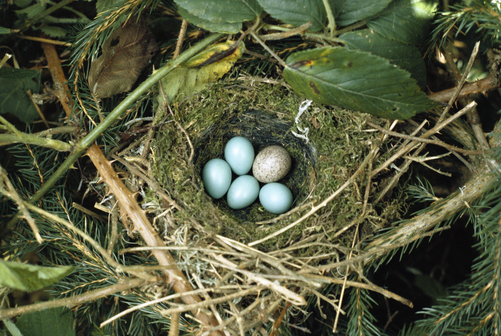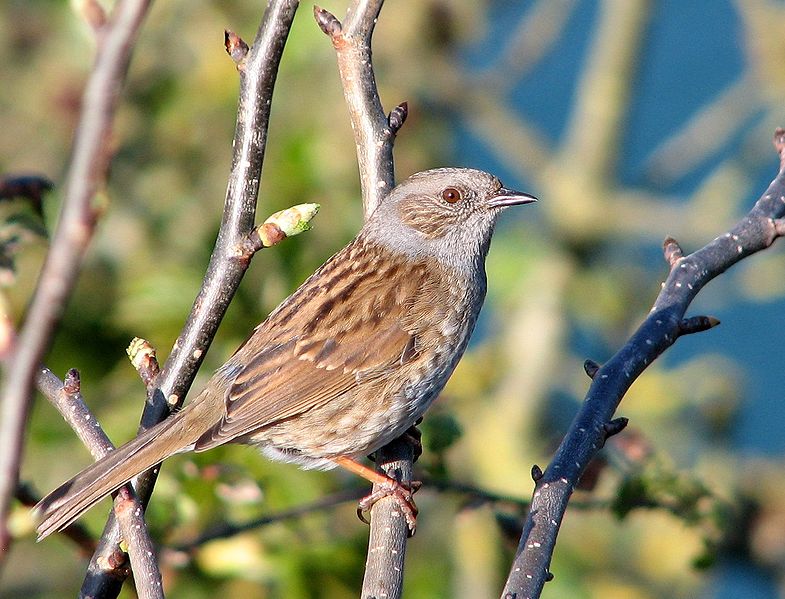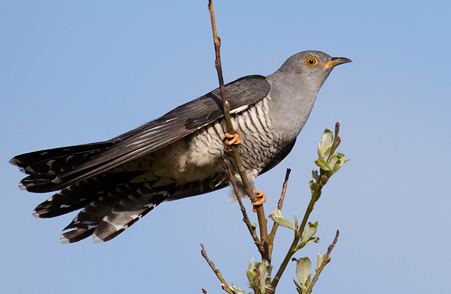This week we are taking a look at the Dunnock (Prunella modularis), a small brown bird that often goes about unnoticed. Chances are you have probably seen one, but their inconspicuous colour and tendency to sit in hedgerows and dense vegetation, means that people are often not aware of this unobtrusive bird.
You will typically find dunnocks in hedgerows, woodlands and even in your back garden. During the breeding season, dunnocks will build their nests low to the ground in shrubs such as hawthorn or brambles. Dunnocks have an unusually diverse mating system, ranging from monogamy (where one female mates with one male) to polygynandry (where two males ‘pair’ with two females but mate with both). A female dunnock will lay around three to five small blue eggs in her nest, and can lay up to three clutches a year.
Interestingly, this bird is one of the main hosts of parasitism by cuckoos (Cuculus canorus). This means that while a female dunnock is away from her nest, a female cuckoo may sneak into the nest and remove a dunnock egg, the cuckoo then lays one of her eggs in its place. Although a dunnock and cuckoo egg look extremely different (dunnocks lay small, pale blue eggs whereas a cuckoo egg is large, grey and speckled), the dunnock is often non-the-wiser as to this imposter egg. Indeed cuckoo eggs are rarely rejected from the nest of a dunnock. It has been suggested that this is because dunnocks use information on the number of eggs in the nest rather than the colour or size.

Dunnock nest parasitized by cuckoo. Here you can see the small pale blue dunnock eggs alongside the larger , grey cuckoo egg © JOHN HAWKINS/ FLPA/ MINDEN PICTURES/National
As a result a female dunnock can become the unsuspecting parent to a cuckoo chick. This is especially unfortunate as cuckoo chicks grow a lot faster than dunnock chicks, and have a much greater appetite! Consequently, the cuckoo chick will often evict its fellow dunnock nest mates to remove any competition for food, and the dunnock parent is left trying to keep up with the feeding demands of the large imposter chick.
Despite this parasitic relationship between the cuckoo and dunnock, cuckoos have actually seen a remarkable decline since the 1980s of over half their population in the UK. Similarly, dunnocks have also seen a significant population decline since the 1980s, putting them on the Amber List of birds of medium conservation concern. This was due largely to changes in woodland management practices in the UK. Dunnocks rely on shady, dense vegetation for foraging and breeding, but this is often removed by browsing from grazing animals or tree and shrub thinning practices.
Luckily, however, dunnock numbers have stabilised in recent years and there is a greater awareness of how our woodland management affects these birds. We hope to see many more in our gardens and hedgerows in the future!
Eleanor Kirby-Green
SNCV Biodiversity Assistant









